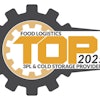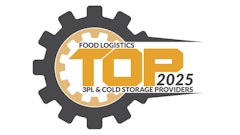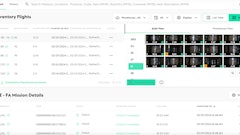
A transportation management system (TMS) utilized to its fullest potential, becomes a truly strategic supply chain management tool. TMS can help enforce compliance with all manner of business rules; provide auditability to reveal deviations from planned/approved shipping activities; even deliver insight into the effects of transportation issues on overall product cost. The rub is, not all TMS solutions are created equal and the weaker ones often color the market’s perception regarding all TMS solutions – even the most robust.
Want an example of how a best-in-class TMS solution adds strategic value to the overall supply chain?
In 2004, the California legislature passed the Transport Refrigeration Unit (TRU) Airborne Toxic Control Measure (ATCM), mandating the use of low-emission TRU equipment for all trucks shipping product in or out of the Golden State. With the 12-year phase-in process nearly complete, most carriers have decided whether to make their equipment compliant or forgo working in CA.
However, the law’s impact on shippers’ transportation decisions adds another variable to the already staggering list of things transportation managers must consider when building shipments and routes. Which carriers are compliant with updated equipment? Which ones have decided they simply will not accept tenders into or out of California? How will this unique, single-state requirement impact on the cost and timeliness of my shipments to or from CA?
California’s ATCM is the perfect example of how inevitable changes in the market test the flexibility of any TMS. All TMS solutions claim to offer the flexibility to adapt to such occurrences and afford users the ability to take a strategic view of the ramifications of such a change. But is such an adjustment effortless and easy to accomplish? Or is it a huge hassle that will likely be swept under the rug? If a TMS cannot adapt easily, over time, hundreds of relatively minor considerations like this one can add up to major, unnecessary expenses.
Being a strategic supply chain tool requires being able to accommodate emergent modifications to tactical functions like routing and tendering. But for some solutions, making the following change in real-time is not an easy or intuitive process. Best in class TMS programs should be able to:
- Quickly, easily, broadcast a message to the entire carrier base asking each carrier to update their established carrier profile reflecting whether or not they’re compliant with ATCM for TRU
- Collect carrier responses
- Identify and remove non-responsive carriers
- Load updated carrier profiles back into the system
Once the carrier profiles are updated via the automated communications systems and non-responders are removed, tendering can see equipment requirements or SKUs that require TRUs. Only California TRU-compliant carriers will be offered the tender in the auto-tender process. Transportation managers enjoying full visibility into the costs (in both time and spend) incurred by ATCM on all California shipments, remain fully aware of how this issue affects their budgets. As a result, they can take whatever steps are necessary, such as revisiting shipment schedules to minimize trips into CA; or informing their sales teams of the need to adjust pricing for customers requiring CA shipments.
If a TMS does not support the above best practices, it will be up to system users to do the labor-intensive work of determining if each carrier is compliant for CA shipments. This adds a manual, work-around back into the process (assuming they don’t simply avoid the issue). Sounds a lot more tactical than strategic, doesn’t it?



















